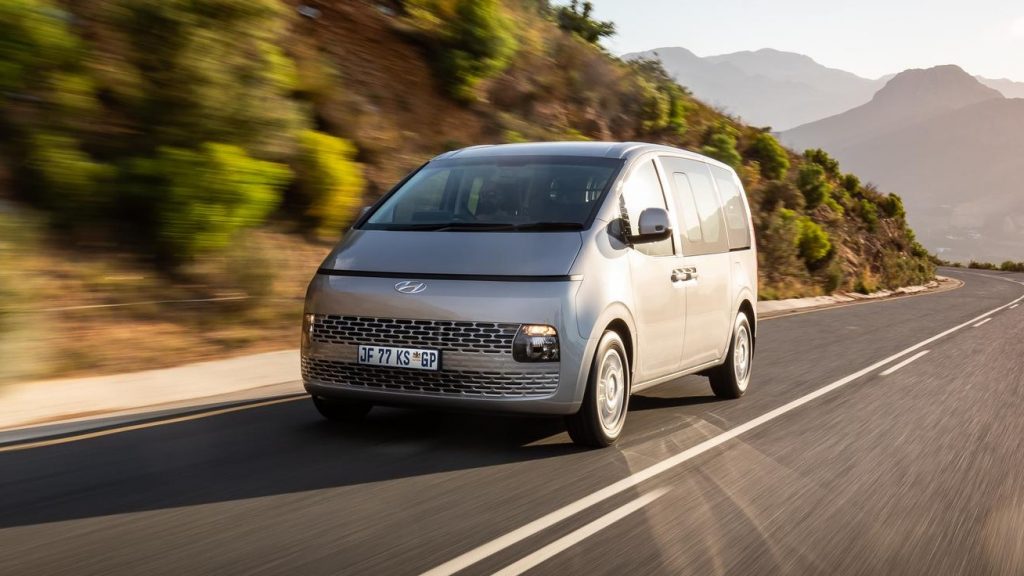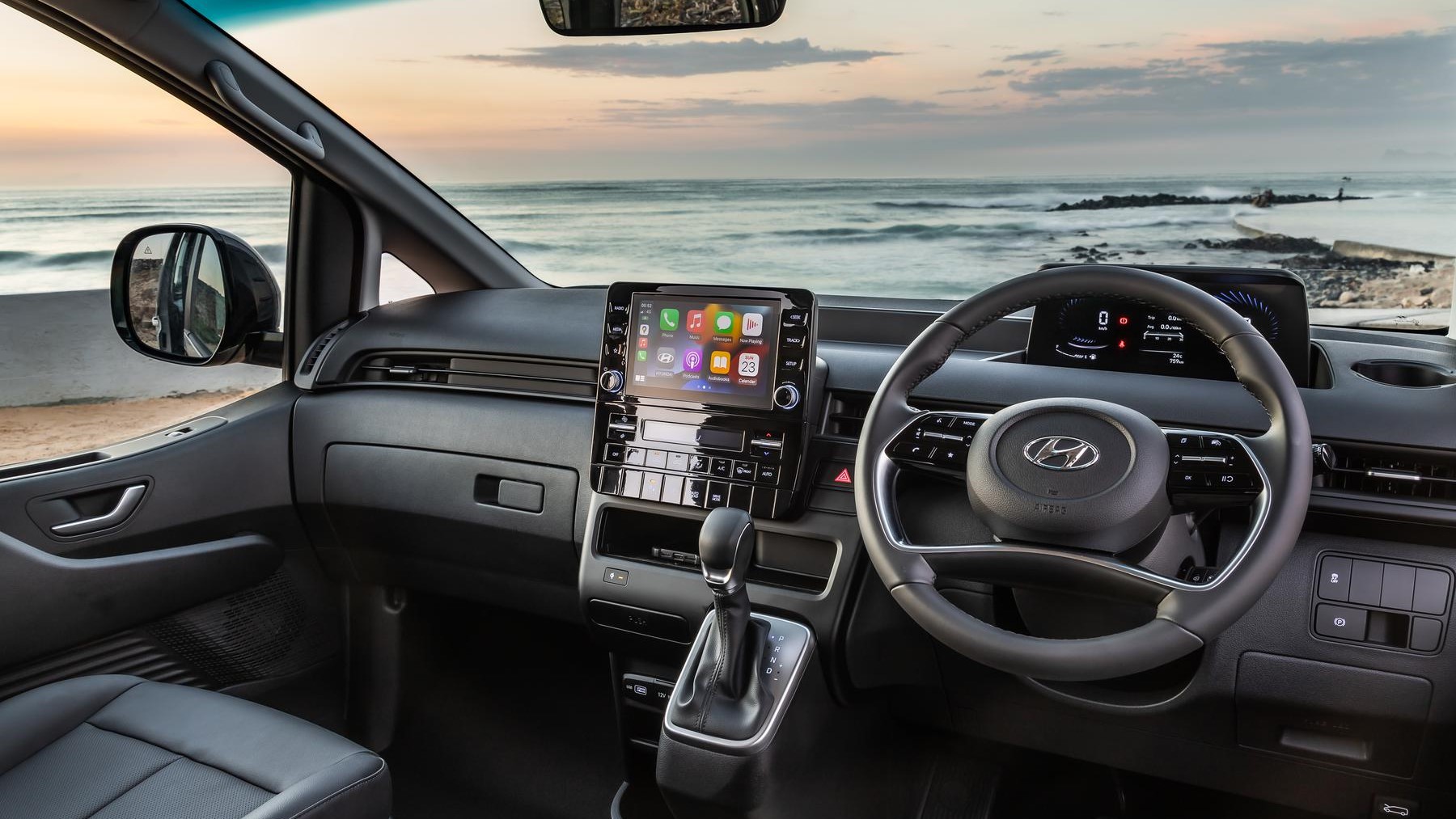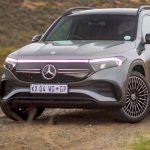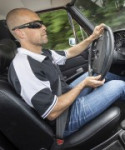Five years ago, launching a decent streaming platform took millions. Now? A teenager with a laptop can build something that reaches millions. That shift…
Review: Hyundai Staria R2.2 multicab

Staria multicab looks like a futuristic aero van. But in fact, it’s a very clever multipurpose vehicle.
The double-cab bakkie is South Africa’s middle-class family vehicle of choice. But they have many, many compromises.
Double-cab bakkies aren’t comfortable to travel in for the rear passengers., Anyone who has done more than an hour in the back of double-cab, will attest to that.
Then there is the fallacy of a double-cab bakkie’s load area. Even when it has a roller-shutter cover that locks, it is a comprise.
Double-cab bakkies have much less carrying capacity, in volume, than a single-cab bakkie. And the cabin area does not offer any safe storage – a huge issue when you are moving about with that R20 000 digital device, for remote working outings. With a double-cab bakkie, you must take that laptop bag with you each time to stop and go into a shop or venue, even when it’s not for a meeting. Annoying.

Staria multicab for the win
What if you want the double-cab configuration, lots of cargo load space, but none of the compromises? Then there’s a rather clever solution from Hyundai.
The Staria MPV range has been transformative for Hyundai. Although a large MPV is the best family vehicle you can own, they have fallen out of favour, with most buyers preferring luxury SIVs. Hyundai has kept the faith, though, with Staria. It has a futuristic design, which gives it a lot more road presence than other MPVs. The slick nose section also aids aerodynamics, lowering fuel consumption and wind noise at cruising speeds.
And the Staria range has a particularly useful derivative: the multicab. It uses the same Staria van platform and 2.2-litre Hyundai turbodiesel engine but has an encased load area. Although the multicab looks like a conventional MPV, with its unitary external body panels and large glasshouse, it is actually a more of pseudo double-cab.

Secure load area
Hyundai’s engineers separate the passenger cabin from the load area, with a steel casing with small vents ports at the bottom and a window.
The multicab’s sheer size might intimate inexperienced or nervous drivers, but Hyundai’s engineers have made it easy to position on the road and place into tight parking bays. Visibility is outstanding, thanks to oversized windows and the very short overhangs.
The multicab also features a rapid steering ratio, making it easy to wind and unwind steering lock, when edging into and out of parking bays.

It’s not that heavy on diesel
Hyundai’s 2.2-litre turbodiesel engine is used in many vehicles. And it works great for the multicab.
The turbodiesel engine boosts 130kW and 430Nm of torque. Paired with an eight-speed automatic gearbox, it performs adequately at low- to medium speeds, even when fully loaded. That aero shape also helps to manage drag, and we saw diesel consumption go below 9l/100km, during our testing.
Unlike a traditional double-cab, with its cramped rear legroom and shallow floor, the Staria has generously spacious and comfortable rear passenger accommodation. The cabin architecture is massive compared to a double-cab bakkie. You’ll journey from Gauteng to the coast, in comfort, even with a full complement of passengers. And more importantly: all their gear.

Better than a bakkie
Then there is the loadability, which is vast, at 1075-litres. Whether you have watersport gear or mountain bike to travel with, no vehicle does it better than an MPV, like Hyundai’s multicab.
If you use a double-cab bakkie to haul loads, or regularly travel along poor-quality dirt roads to isolate venues for weekend’s away. Then yes. They make sense. But as a daily driver family vehicle for urbanities, they can be annoying. Something the Staria multicab is not, despite its size. It is a lot more car-like to drive, than a bakkie could ever be.
Staria multicab has space for everything
Inside, the Staria multicab has an abundance of clever storage spaces. There are overhead loading trays, just under the roof lining, for both driver and front passenger. Small and mid-size item storage is brilliant, too, with the front doors featuring three door pockets each.
For a vehicle priced at R764 900, the lack of powered front seats, especially for the driver, is odd. Especially for a Korean brand, where standard equipment levels are ordinarily very comprehensive.
But there’s a commonly untold issue with powered seats: they are slow to adjust when you are in a hurry. And need to make space for rear or front passengers in a hurry. And with an MPV, ingress and egress of passengers is a currency.

What doesn’t it do well?
When driving something as large as a full-sized MPV, visibility begets confidence. And as we’ve already mentioned, the Staria multicab has a huge glasshouse area, facilitating excellent visibility. But, almost paradoxically, it also has a huge rear-view blind spot.
When you are checking your rear-view mirror, the vertically split tailgate shutline and intrusion bar takes up the centre field of view. And there are moments when a small- to mid-sized vehicle approaching you from the rear becomes invisible, at a specific distance.
If someone is trailing you very closely, you’ll see the vehicle outline beyond the Staria multicab’s rear-view blind spot. But there were a few times I had to double-take my rear-view observations to confirm the suspicion that someone was driving behind me.

A very, very clever family vehicle purchase
The Staria multicab is a brilliant family vehicle. This Korean van is outstanding for those buyers who can look beyond the double-cab bakkie fallacy and recognise what they truly require for their daily driving needs.
As a family vehicle, it’s better in nearly every way than any double-cab bakkie. MPVs are deeply unpopular in the South African market, with most buyers with the means choosing a double-cab bakkie instead. But with Hyundai’s brilliant multipurpose van, you can haul more volume and effects than any double-cab while transporting passengers from Gauteng to the coast without discomfort.
The reality is that very few double-cab bakkie owners even use their vehicles off-road. This negates the point of having a bakkie, with its robust suspension. Staria multicab. It’s the smartest and stealthiest hybrid concept double-cab you don’t know about.


